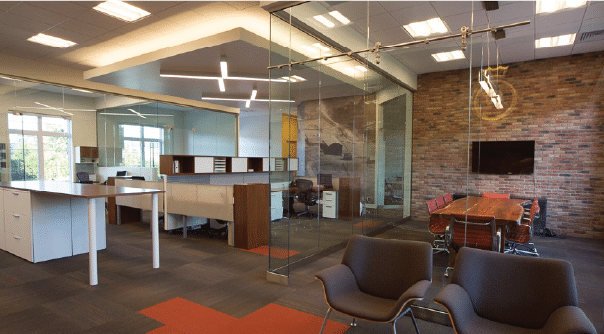Employee feedback directly influences job satisfaction levels.
When employees feel their voices are heard regarding office design, they are more likely to be satisfied with their work environment. This satisfaction plays a critical role in retaining talent and reducing turnover rates. Moreover, spaces that reflect employee preferences can foster a sense of belonging and ownership. Companies that actively seek out employee input often witness higher morale and motivation. Ultimately, when employees are happy, productivity and creativity tend to flourish.
Boosting Collaboration
Thoughtfully designed spaces can enhance collaboration among employees.
By gathering feedback on how teams interact, organizations can design office layouts that facilitate better communication and teamwork. Collaborative spaces equipped with the right amenities encourage spontaneous discussions and idea-sharing. When employees feel comfortable in their environment, they are more likely to engage with their colleagues. Such interactions can lead to innovative solutions and strengthened relationships. Investing in collaborative spaces ultimately cultivates a culture of cooperation within the workplace.
Improving Productivity
Optimal office design is closely tied to increased employee productivity.
Studies show that environments tailored to employee input can significantly enhance focus and efficiency. Quiet zones, ergonomic furniture, and adequate lighting are just a few design elements that can minimize distractions. When employees are comfortable, they are better able to concentrate on their tasks. Additionally, flexible workspaces allow individuals to choose environments that suit their working style. This personalized approach can lead to marked improvements in performance and output.
Fostering Health and Well-being
Office design impacts the overall health and well-being of employees.
Gathering feedback on wellness preferences helps organizations create healthier work environments. Incorporating elements like natural lighting, greenery, and ergonomic workstations can reduce stress and fatigue. A design that prioritizes well-being can lead to lower absenteeism and healthcare costs. Moreover, spaces encouraging physical activitysuch as standing desks or walking pathscan promote a more active lifestyle. Prioritizing health not only benefits employees but also enhances the company’s productivity and reputation.
Adapting to Changing Needs
Employee needs evolve, and so should office designs.
Regularly soliciting feedback ensures that workplaces remain relevant to shifting employee preferences. Adaptability in office design is crucial in accommodating various working styles, especially with the rise of hybrid work models. Employers who invest in flexible spaces can better respond to changing business demands and employee requirements. This proactive approach allows organizations to stay ahead of trends and maintain employee satisfaction. Ultimately, a willingness to adjust and evolve can greatly enhance workplace dynamics.
Encouraging Innovation
A thoughtful design can stimulate innovation and creativity.
Employee feedback can unveil ideas for creating spaces that inspire creativity and out-of-the-box thinking. Design elements such as open areas, creative zones, and art displays can nurture a culture of innovation. When employees are surrounded by stimulating and visually appealing environments, they are more likely to think creatively. Additionally, spaces for brainstorming and collaboration can encourage teams to push boundaries. Investing in innovative office design sends a clear message that the organization values creativity and fresh ideas.
Building a Stronger Company Culture
Inclusive office design promotes a strong company culture.
When companies actively involve employees in the design process, it fosters a culture of trust and openness. This inclusion helps to build a sense of community and shared purpose. Spaces that reflect company values and employee input can strengthen employee engagement and loyalty. A well-designed environment can also showcase the organization’s commitment to its workforce. Ultimately, a strong company culture contributes to increased motivation and long-term success.
Investing in employee feedback for office design not only enhances the work environment but also drives overall business success. By prioritizing employee insights, companies can create spaces that foster satisfaction, productivity, and innovation, proving that such investments yield substantial returns.

